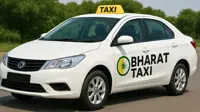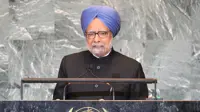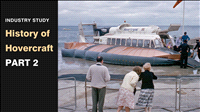JetBlue’s proposed domestic partnership stirs union resistance amid ongoing contract talks
02 May 2025

JetBlue Airways is exploring a new domestic partnership—reportedly with United Airlines—but the move is drawing sharp criticism from its pilot union, which fears the deal could reshape the airline and put pilot job security at risk.
In a message to union members, Wayne Scales, chair of the JetBlue Air Line Pilots Association (ALPA) Master Executive Council, said the proposed agreement may violate existing contractual protections. The current pilot contract restricts the airline from entering certain commercial partnerships unless those deals lead to increased aircraft utilization and growth in pilot staffing.
“This is not a company operating with the best interests of its pilots in mind—at all,” Scales stated, noting that the union is working with legal and professional teams to review the proposed arrangement.
JetBlue confirmed it is in discussions with a larger U.S. carrier but hasn’t named United. The airline said it remains fully aware of its contractual obligations and will adhere to all provisions. United has declined to comment.
The proposal comes as JetBlue and its pilot union are in the middle of negotiating a new labor agreement. Scales criticized management for not consulting the union beforehand, saying pilots have not been adequately briefed on the potential implications of the partnership.
For JetBlue, the move could offer strategic benefits. Still recovering from pandemic-related disruptions and ongoing demand softness, the airline is under pressure to find new sources of revenue. Partnerships that offer improved customer connectivity and enhanced loyalty rewards could strengthen its frequent-flyer program, one of the few areas showing consistent growth.
However, such alliances can become flashpoints in labor relations. Under the existing pilot agreement, code-share or joint ventures are only permitted when aircraft usage and pilot headcount increase. That threshold may not currently be met. JetBlue’s average daily aircraft utilization dropped to 9.7 hours in the first quarter, down from 10.2 hours a year earlier. Pilot numbers have also slipped slightly—from around 4,950 last year to 4,800 in April.
The airline has cut capacity in key markets and encouraged early pilot retirements in an effort to reduce costs. Against this backdrop, union leaders remain especially cautious about operational decisions made without clear communication or collaboration.
“Until we have answers, every pilot at JetBlue has reason to be concerned about what’s being negotiated behind closed doors,” Scales added.
While JetBlue has signaled that a formal announcement could come this quarter, sources close to the matter suggest that the partnership is still in flux and may not be finalized.
Summary
JetBlue's potential partnership with a larger U.S. airline—widely believed to be United—is facing strong pushback from its pilot union, which says the deal could undermine job protections. As the airline seeks financial stability through expanded partnerships and loyalty revenue, union leaders are raising red flags over transparency and contract compliance. The outcome could significantly impact labor relations and JetBlue's strategic direction in a tough post-pandemic landscape.
FAQs: Understanding JetBlue’s Proposed Partnership and Union Response
1. Why is JetBlue pursuing a domestic partnership now?
JetBlue is still recovering from the financial hit caused by the COVID-19 pandemic. The airline is seeking ways to increase revenue, improve customer connectivity, and strengthen its loyalty program. A domestic partnership—especially with a larger carrier like United—could help JetBlue compete more effectively against major U.S. airline alliances.
2. What are the risks of such a partnership for JetBlue’s pilots?
Pilot unions are concerned that a partnership might lead to fewer flying opportunities for JetBlue pilots if flights are operated by the partner airline. The existing contract allows partnerships only when aircraft usage and pilot staffing increase. Without those assurances, unions fear job erosion and reduced bargaining power.
3. What are code-share agreements and joint ventures in the airline industry?
A code-share agreement allows one airline to sell seats on a flight operated by another, creating the appearance of a seamless service. A joint venture goes further—it involves deeper revenue and cost sharing between airlines on specific routes. Both arrangements are designed to expand market reach and boost efficiency but can raise labor concerns if not carefully structured.
4. How does JetBlue’s aircraft utilization compare historically?
JetBlue’s aircraft utilization—the average number of hours each aircraft flies per day—fell to 9.7 hours in Q1 2025, down from 10.2 hours in Q1 2024. Lower utilization may indicate reduced demand or efficiency, and it can trigger union concerns under contractual clauses tied to operational performance.
5. How many active pilots does JetBlue currently employ?
As of April 2025, JetBlue employed approximately 4,800 active pilots, a slight drop from around 4,950 a year earlier. The decline is partly due to early retirement offers aimed at reducing labor costs amid weak travel demand.
6. Has JetBlue tried similar partnerships in the past?
Yes. JetBlue has previously formed alliances, most notably with American Airlines through the now-defunct “Northeast Alliance” (NEA), which faced legal challenges over anti-competitive concerns. The current attempt may be a strategy to replace lost network access from the NEA’s dissolution.
7. What is the economic context influencing JetBlue’s strategy?
Airlines continue to face economic uncertainty due to inflation, fluctuating fuel costs, and shifting consumer travel habits. Partnerships can help smaller carriers like JetBlue remain competitive without adding significant overhead, but they must balance that with union obligations and brand identity.






















